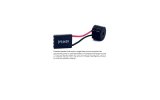-
Hi there and welcome to PC Help Forum (PCHF), a more effective way to get the Tech Support you need!
We have Experts in all areas of Tech, including Malware Removal, Crash Fixing and BSOD's , Microsoft Windows, Computer DIY and PC Hardware, Networking, Gaming, Tablets and iPads, General and Specific Software Support and so much more.
Why not Click Here To Sign Up and start enjoying great FREE Tech Support.
This site uses cookies. By continuing to use this site, you are agreeing to our use of cookies. Learn More.
Solved Yellow light on motherboard for dram AND cpu.
- Thread starter Mr. Rosy
- Start date
You are using an out of date browser. It may not display this or other websites correctly.
You should upgrade or use an alternative browser.
You should upgrade or use an alternative browser.

- Status
- Not open for further replies.
Ok I will wait for youI am currently working on repeating the process with the other stick.
You are in the second slot?
Ok we will try a cmos reset.
Leave ram in.
Power off
Remove power cord from computer.
Reset cmos
Power back on
Test

Ok we will try a cmos reset.
Leave ram in.
Power off
Remove power cord from computer.
Reset cmos
Power back on
Test
Your cpu needs BIOS version F9.
Because it won't boot it is impossible to say if it has version F9 or not.
It is booting past the cpu so I assume that the bios version is good.
Do you have any friends or relos work etc that you could borrow a stick of ram to test.
is your ram one of these.
If not please give the Module P/N

 www.gigabyte.com
www.gigabyte.com
Because it won't boot it is impossible to say if it has version F9 or not.
It is booting past the cpu so I assume that the bios version is good.
Do you have any friends or relos work etc that you could borrow a stick of ram to test.
is your ram one of these.
If not please give the Module P/N
Z790 AORUS ELITE AX (rev. 1.0) Support | Motherboard - GIGABYTE Global
Lasting Quality from GIGABYTE.GIGABYTE Ultra Durable™ motherboards bring together a unique blend of features and technologies that offer users the absolute ...
If you cannot borrow a stick of ram you have only a couple options.
1) Update the BIOS
2) RMA Ram
3) RMA Motherboard.
4) RMA Motherboard and ram.
I would try a bios update if I was building this rig.
With Qflash Plus it is NORMALLY fool proof.
You would need a small version 2 usb stick - Black end.
You format the usb stick to FAT32
Download the file and rename.
Stick it into the correct usb port. It should be labelled on the back of the board.
DO NOT TURN ON THE POWER. You then press the Qflash plus button
This video gives you an idea.
You must make sure you have the correct Qflash port. Do not rely on the video to show the port
They always change.
Qflash button on your board

Qflash Port

There is always a risk with flashing a bios.
However, Gigabyte has taken out most of the risk with Qflash plus.
If in doubt about any of this ASK
1) Update the BIOS
2) RMA Ram
3) RMA Motherboard.
4) RMA Motherboard and ram.
I would try a bios update if I was building this rig.
With Qflash Plus it is NORMALLY fool proof.
You would need a small version 2 usb stick - Black end.
You format the usb stick to FAT32
Download the file and rename.
Stick it into the correct usb port. It should be labelled on the back of the board.
DO NOT TURN ON THE POWER. You then press the Qflash plus button
This video gives you an idea.
You must make sure you have the correct Qflash port. Do not rely on the video to show the port
They always change.
Qflash button on your board
Qflash Port
There is always a risk with flashing a bios.
However, Gigabyte has taken out most of the risk with Qflash plus.
If in doubt about any of this ASK
Bios download

 www.gigabyte.com
www.gigabyte.com
If this is your MB it clearly shows the BIOS update port.

Z790 AORUS ELITE AX (rev. 1.0) Support | Motherboard - GIGABYTE Global
Lasting Quality from GIGABYTE.GIGABYTE Ultra Durable™ motherboards bring together a unique blend of features and technologies that offer users the absolute ...
| Intel | Core I9-14900KF | 3.20GHz | 36MB | N/A | Raptor Lake | Intel 7 | B0 | 125W | 100 | F9 |
|---|
If this is your MB it clearly shows the BIOS update port.
. Does my PC need to be connected to a keyboard in order to connect properly?
100% yes as a keyboard must be detected else the power on self test ( POST ) will fail, see How Power-On Self-Tests work a keyboard is #5 on this particular list.
The missing keyboard may not solve all your issues but it certainly removes a problem by hooking one up.
I do not hear any beeps.
If you haven't fitted an onboard speaker you will not get any beeps, see attachment below;
Attachments
You are welcome and good luck 
NB: Something to add to the list, remove the CMOS battery from the MB and leave it out for a while and then put it back in, please note that you must do the below first;
NB: Something to add to the list, remove the CMOS battery from the MB and leave it out for a while and then put it back in, please note that you must do the below first;
The following checks require the computer case to be opened so take the following safety precautions 1st, disconnect the power cord from the wall socket, press the case power button for twenty seconds or so to get rid of any residual charge in the system, take anti static precautions before touching anything inside, you can do this by touching a bare metal part of the case or PSU.
Attachments
From what I understand, Gigabyte has its own system for flashing BIOS, Qflash Plus. I need to take a USB 2.0 flash drive and download the F9 BIOS zip file from the Gigabyte website, extract it, rename it to gigabyte.bin, download it to the flash drive, and then plug the flash drive into the USB 2.0 port on the back panel of my motherboard. Then I need to press the Qflash button on the motherboard. I'm confused on whether or not my PSU needs to be on, because you told me here that it should be off, but the Gigabyte website says it should be on. I also want to know what components should be powered and connected while I am flashing the BIOS, like if I should unplug the GPU, RAM, or SSD card while I'm doing this.
Sorry but you should first and foremost be following the steps in my replies '#31 and 33, the earlier post addresses the BIOS error speaker.
Flashing the BIOS when you can see what you are doing comes with risk so doing it blind should be a last resort, side note, a keyboard needs to be connected when updating the BIOS as well btw.
Flashing the BIOS when you can see what you are doing comes with risk so doing it blind should be a last resort, side note, a keyboard needs to be connected when updating the BIOS as well btw.
What step is missing from your reply #37 ?
In answer to your question. No, for as to why I will explain once you have answered the question above.
In answer to your question. No, for as to why I will explain once you have answered the question above.
I don't think I understand your question, sorry. I am just trying to figure out in what sequence should I try these things, and I'm trying to piece together all the information. I know you told me to remove the battery and reinstall it, and I need the speaker to tell me what is wrong if it fails to boot up. I also know that the blind flash is a last resort, so I should try everything else first. Do I need to order a speaker? Did I understand how to do the flash correctly? I don't really get what I'm missing.
You missed connecting a keyboard which if you neglected to do during a BIOS flash it could lead to you bricking a perfectly good MB.
Do what has been suggested by myself and then get back to us, whatever you do, do not try flashing the BIOS before you do get back to us **
** There are two revisions of the MB that you have and they don`t both use the same BIOS.
Do what has been suggested by myself and then get back to us, whatever you do, do not try flashing the BIOS before you do get back to us **
** There are two revisions of the MB that you have and they don`t both use the same BIOS.
- Status
- Not open for further replies.


